The latest books from UniSA researchers
- Global Perspectives on Sustainable Fashion
- Homo Problematis Solvendis – Problem-Solving Man: A History of Human Creativity
- Kinanthropometry and Exercise Physiology
- Nutrition for Sport, Exercise and Performance
- Ongoing Mobility Trajectories: Lived Experiences of Global Migration
- The Routledge REITs Research Handbook
- Unmaking Waste in Production and Consumption
Global Perspectives on Sustainable Fashion
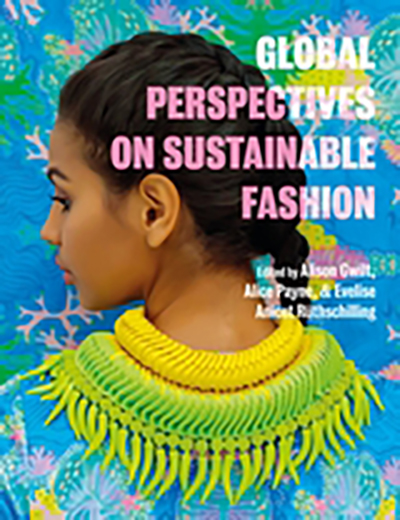
Global Perspectives on Sustainable Fashion showcases the global fashion industry's efforts to reduce the negative impacts associated with fashion production and consumption.
Co-edited by UniSA’s Associate Research Professor Dr Alison Gwilt, Global Perspectives on Sustainable Fashion charts the diverse environmental, ethical, social, and economic factors that are contributing to the development of sustainable fashion practices across the world.
Illustrated throughout with infographics, photographs and diagrams of creative works, 18 essays focus on six regions, examining sustainable fashion in the context of local, cultural and environmental concerns. Also included are 18 regional 'Spotlight' sections highlighting the differences and similarities across regions by concentrating on examples of best practice, design innovation and impact on the community.
Published by Bloomsbury Visual Arts, the book is available online.
Homo Problematis Solvendis – Problem-Solving Man: A History of Human Creativity
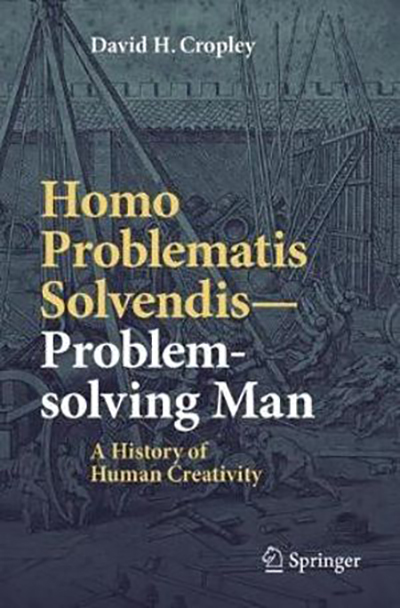
Can creativity be defined? Some say creativity is a gift from the Gods; others ascribe creativity to a “muse”, and many still, insist that creativity cannot be defined, and certainly not sullied by something as crass as measurement.
In Homo Problematis Solvendis – Problem-Solving Man: A History of Human Creativity, internationally recognised expert on creativity and innovation, UniSA’s Professor David Cropley, addresses the history of human creativity and innovation first by explaining what creativity and innovation are, and why human “needs” act as the stimuli to problem solving.
The book then explores innovations over ten distinct “ages” of human history, beginning with “Prehistory”, and moving up to the present “Digital Age”. Each era of human history is covered by one chapter, with three key innovations of that era described in each chapter.
Unlike other books that discuss and describe inventions and human ingenuity, this book focuses not merely on “what” was invented, or “who” did the inventing, but on “why” it was invented, and “why” it should be considered creative. What need did each innovation satisfy, and how have humans drawn on their innate problem solving ability – their capacity for creativity/innovation – to satisfy these needs? In this manner, the book is a history of the psychological capacity of humans to identify and solve problems (creativity and innovation), and not simply a catalogue of the history of technology, or a biography of inventors.
As we move into the era of Industry 4.0 and the Future of Work, it is more important now, than ever before, to understand creativity and innovation. Just how creative are we, as a species, and what does the future hold in a world where creativity will be the one key skill that is unique to humankind?
Published by Springer, Homo Problematis Solvendis – Problem-Solving Man: A History of Human Creativity, is available online.
Kinanthropometry and Exercise Physiology
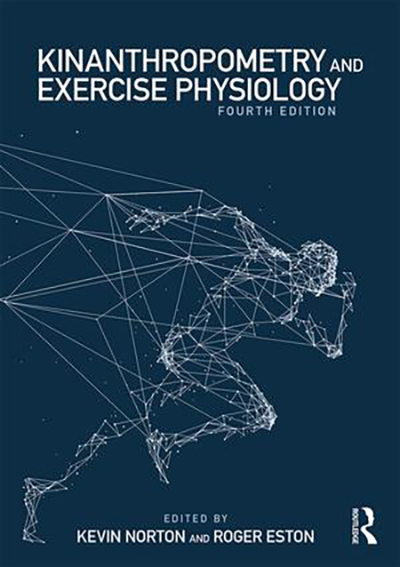
Fully updated, revised and consolidated into one single volume, the fourth edition of Kinanthropometry and Exercise Physiology offers the best theoretically contextualised, practical resource for instructors and students available.
Edited by UniSA’s Professors Kevin Norton and Roger Eston, the book incorporates substantial sections on kinanthropometry – the study of human body size, shape and form and how those characteristics relate to human movement and sporting performance – as well as exercise physiology, energy systems and the application of science in health and high performance settings. The book covers the basics of measurement in exercise science through to advanced methods.
It includes brand new chapters on Pre-exercise screening and health risk stratification; Functional movement assessment; Point of care testing; Anthropometry standards; Anaerobic power and capacity; History of exercise for health benefits; Monitoring training loads in high-performance athletes; and Measuring game style in team sports.
Offering online access to newly developed exercise science measurement tools through the Exercise Science Toolkit, Kinanthropometry and Exercise Physiology is a complete resource, detailing the science of kinanthropometry and exercise physiology to their applications in health and performance, through practical, interactive learning.
This book is an essential companion for students on any sport and exercise science-related degree programme and any instructor leading practical, laboratory-based classes.
Published by Taylor & Francis Ltd, the book is available online.
Nutrition for Sport, Exercise and Performance
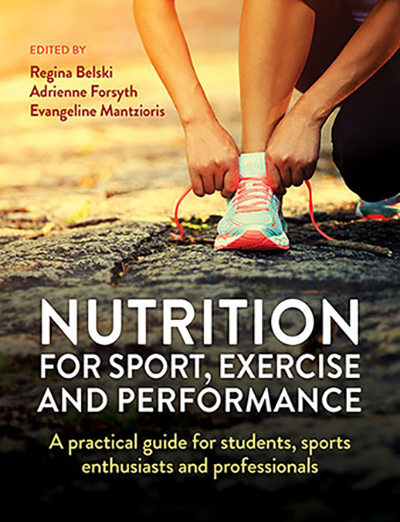
Nutrition before, during and after training or a sporting event can improve the comfort, energy and performance of athletes of all levels, from elite to recreational, as well as providing long-term health benefits.
The new book Nutrition for Sport, Exercise and Performance – edited by UniSA’s Evangeline Mantzioris, Regina Belski from Swinburne University of Technology, and Adrienne Forsyth from La Trobe University – is a comprehensive resource for nutrition and exercise science students which explores the fundamentals of sports nutrition.
Offering a clear, practical and accessible guide to the fundamentals of sport and exercise nutrition, the expert authors begin by explaining key principles, including understanding energy systems, exercise physiology and metabolism. They cover the basics of digestion, absorption and nutrition; examine the key macronutrients and micronutrients essential for performance; and discuss the process of dietary assessment.
They also explore nutrition for pre- and post-training, hydration, changing body composition, and the use of supplements, and provide guidance on developing plans for both individual athletes and teams.
The final component examines specific nutrition issues and special needs, including working with elite athletes, strength-and-power athletes, young, older and disabled athletes, endurance sports, GI disturbances and rehabilitation issues. Cultural issues are also explored, including diets for vegan and vegetarian athletes, and religious perspectives and requirements.
Featuring contributions from a range of sport and exercise nutrition professionals and including practical diet plans, diagrams and the latest research and evidence throughout, this is a core reference for undergraduates, nutritionists and trainers.
Published by Allen & Unwin, the book is available online.
Ongoing Mobility Trajectories: Lived Experiences of Global Migration
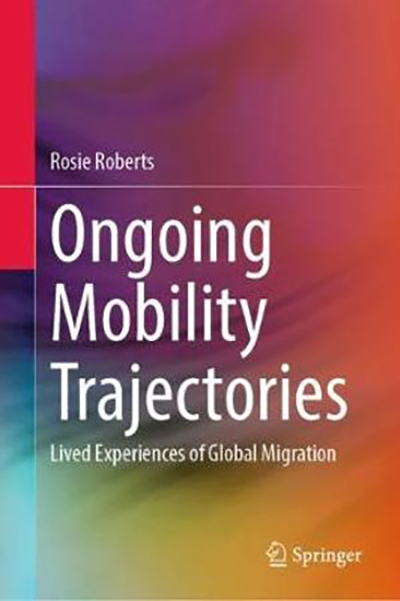
This book explores the complex category of the ‘skilled migrant’, drawing on multi-sited and longitudinal narrative interviews with migrants who have all lived in Australia at some point in their lives (as an origin and/or destination).
Written by UniSA lecturer and cultural researcher Dr Rosie Roberts, Ongoing Mobility Trajectories: Lived Experiences of Global Migration, conceptualises Australia as a site within global migration pathways.
The book argues that there is a need to not only understand the experiences of skilled migrants who have engaged in official labour channels but also to include people who embody the concept of skills but migrate in other ways, such as international students, humanitarian entrants, spouses and family-sponsored migrants who are not recognised in a country’s official skilled migration statistics. Taking a spatial and temporal approach to their life histories, Dr Roberts contests binaries such as student/worker, tourist/worker, skilled/unskilled, temporary/permanent within contemporary migration policy.
Using the concept of the ‘mobile settler’, the book shows how becoming a skilled migrant is not just a political and economic determination of knowledge and human capital but a complex negotiation of emigration and immigration contexts, risk, identities, qualifications and skills, as well as personal ties.
Published by Springer, the book is available online.
The Routledge REITs Research Handbook
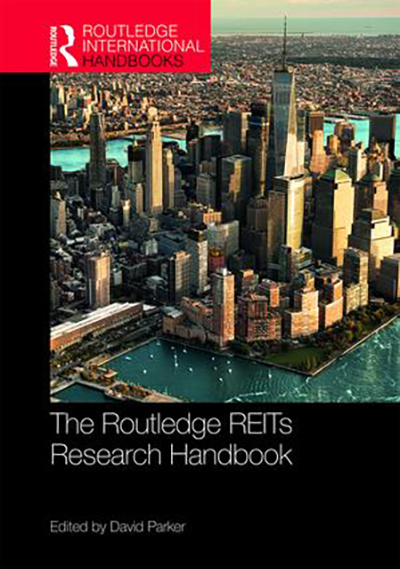
The Routledge REITs (Real Estate Investment Trust) Research Handbook presents a cutting-edge examination of the research into this key global investment vehicle.
Edited by internationally respected academic and REIT expert Professor David Parker, from UniSA’s School of Commerce, the book will set the research agenda for years to come.
The handbook is divided into two parts, the first of which provides the global context and a thematic review covering: asset allocation, performance, trading, sustainability, Islamic REITs, emerging sectors and behavioural finance. Part II presents a regional review of the issues with high level case studies from a diverse range of countries including the US, UK, Brazil, India, Australia, China, Singapore, Israel and Russia, to name just a few.
This handbook redefines existing areas within the context of international REITs research and highlights emerging areas and future trends. It provides postgraduates, professionals and researchers with ideas and encouragement for future research. The handbook is essential reading for all those interested in real estate, international investment, global finance and asset management.
The Routledge REITs Research Handbook is available online.
Unmaking Waste in Production and Consumption
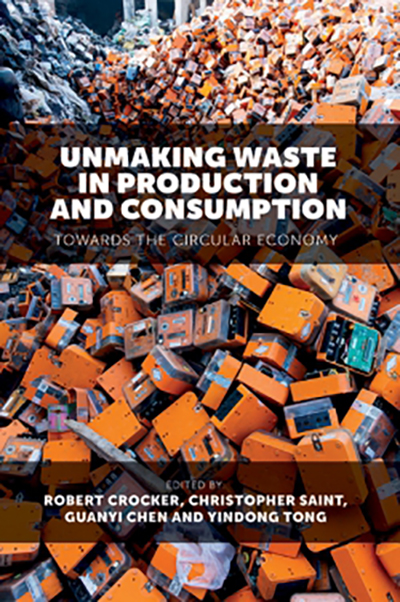
The legacies of a century of fossil-fuel based development and overconsumption, of treating the environment as a waste sink for industry and agriculture, have left devastating impacts on the earth’s air, water and land, and these are directly implicated in Climate Change.
In a book by UniSA’s Dr Robert Crocker and Professor Christopher Saint, along with two colleagues from Tianjin University, the authors explore moves towards the circular economy – a regenerative system where wastes, emission, and energy leakage are minimised and long-lasting design, reuse, re- and up-cycling, and upcycling are maximised.
Unmaking Waste in Production and Consumption: Towards The Circular Economy examines how a number of global institutions and nations, including the European Union and China, have committed themselves to the development of the circular economy. This will require a massive transformation of today’s ‘linear economy’ of ‘make, use and dispose’.
The aim of the Circular Economy is to decouple economic growth from resource and energy use through iterative, systemic social, economic and technological reform.
This book presents new theoretical and practical insights into this concept, based on case studies from both the developing and developed world, with an emphasis on economic and material transformation, design for reuse and waste reduction, industrial ‘symbiosis’ (the planned circulation of resources and energy within an industrial setting), and social innovation and entrepreneurship.
Four central themes emerge through the essays presented here: the importance of ‘restorative design’ in transforming resource flows through both production and consumption, the value of understanding and enumerating wastes in more detail to enable their reuse, the central role of advancing technology and applied science to further this transformation of materials for reuse, and finally, a reconfiguration of design, consumption and retail, so that the present ‘linear’ economy of ‘make, use and trash’ can be replaced with a more ‘circular’ model.
Published by Emerald Publishing, Unmaking Waste in Production and Consumption is available online.
Other Stories
- UniSA to lead Australia’s multi-billion smart satellite revolution
- Howzat! UniSA bowls over cricketers with new fatigue tracker
- Lights, camera … action! Teaching true crime online
- UniSA research independently assessed as having significant impact
- From the Vice Chancellor
- Achievements and Announcements
- World first 3D printed feet: steps up treatment for diabetics
- Finding dignity and grace in the aftermath of the Christchurch attack
- Can you describe UniSA in one word?
- Students create interactive artwork for Asian design festival
- $1.2m renewable energy project a win for consumers and industry
- Space tourism – a launch Australia can’t afford to miss
- The latest books from UniSA researchers
- In Pictures




